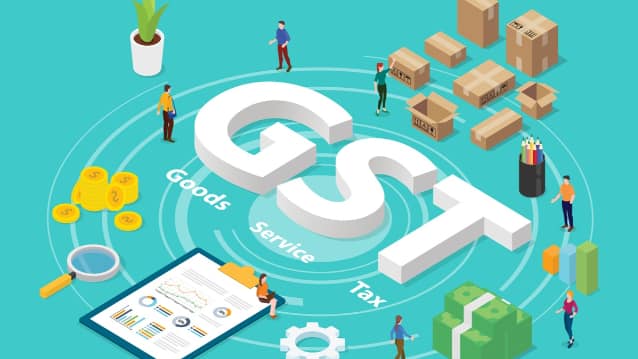GST 2.0 should be seen as a natural evolution of the country's indirect tax system, and the transformation should be carried out in phases.

The government should communicate effectively with businesses and citizens to highlight the benefit of GST 2.0 and reduce resistance to further change. (Source: freepik)
GST was introduced in 2017 to subsume multiple indirect taxes into a single unified tax to increase government revenue. However, the rate structure of GST 1.0 deviated from its predecessor, shifting away from the earlier system of a three-tier CENVAT rate and a single service tax rate.
In the first version, GST was designed with five primary rates — 0 per cent, 5 per cent, 12 per cent, 18 per cent, and 28 per cent -- as well as some special rates applicable to specific goods, including 0.25 per cent for rough diamonds and precious stones and 3 per cent for gold and silver. Petroleum, alcohol, and electricity were and still are completely left out altogether.
Additional cesses, often ranging from 1 per cent - 290 per cent, were also imposed on luxury and sin goods to compensate for the revenue lost by the states during the transition, with a highest rate of 28 per cent. However, according to the Economic Times, this compensation is now being gradually phased out.
Also read: Beyond Slabs: The GST Reset That Could Redraw India’s Tax Landscape
It has been more than eight years since India’s indirect tax regime – GST was implemented and while the major initial challenges have been addressed, the long-standing issue of rationalisation of rates was a persistent problem.
In this backdrop, the GST Council - the apex decision-making body for indirect taxes, had constituted a 13-member Group of Ministers (GoM) to review and examine the rationalisation of multiple rates after extensive deliberations on the issue in the 54th GST Council meeting. Later, the GoM had submitted its report, recommending removal of the two rates of 12 per cent and 28 per cent and introduction of a new rate of 18 per cent.
This was discussed in the 56th meeting of the GST Council on September 3 and the council unanimously approved a comprehensive rate cut and reduction in slabs by introducing a new rate of 18 per cent in place of the existing 12 per cent and 28 per cent rates. The new rates will come into effect from September 22 – which is the first day of Navratri and the beginning of the festive season. However, the new rate will not apply to tobacco and related products and compensation cess will continue to be levied on them until the state loan is repaid.
GST rates will now be divided into three slab structures – merit rate of 5 per cent, standard rate of 18 per cent, and demerit rate of 40 per cent only for super luxury, sin and demerit items like pan masala, tobacco and cigarettes. These changes are in line with prime minister Narendra Modi’s promise to give a Diwali gift on Independence Day.
This will make most goods and services cheaper, benefiting the common people, farmers, MSMEs, women and the middle class. The rates have been rationalised to bring down the prices and this will boost consumption. The GST 2.0 will simplify compliance and improve ease of doing businesses with automated refund and registration process, thereby boosting growth in an adverse global economic environment.
These changes will correct the inverted duty structure – where the GST rate on inputs is higher than the GST rate on finished goods. This mismatch was resulting in accumulation of unutilized input tax credit, as business houses are paying more tax on inputs than what they are receiving on their output, thereby impacting their working capital, and cash flows.
The most significant reform is reducing the tax on individual health and life insurance premiums from the current 18 per cent to zero. It aims to improve affordability of insurance and increase access to insurance. This step will encourage more families to opt for medical cover. However, zero tax on insurance services would mean that insurance companies would not get input tax credit on expenditure incurred in relation to such policies, which would impact the balance sheet of insurance companies.
Challenges that lie ahead
Firstly, the fiscal implication. Although the average collection is higher than the pre-GST period, we cannot rush to conclusion just yet. According to revenue secretary Arvind Shrivastava, rationalisation of rates in GST 2.0 will have a net revenue implication of Rs 0.48 lakh crore as tax rates on certain items, including insurance premium, have been reduced. Based on FY24 estimates, the government had earlier estimated a gross revenue loss of Rs 0.93 lakh crore due to rationalisation of rates. However, higher revenue collections reduced the net loss.
The average GST collection stood at Rs 14.15 lakh crore, which is 3.76 times higher than the average receipts of total taxes included in GST during 2013-2017. However, the average annual growth for receipts is slightly lower than the pre-GST period. The average annual growth rate of GST collection was 11.04 per cent, which is 0.76 per cent lower than the average annual growth rate of receipts of total taxes subsumed in GST during 2013-2017.
Also read: India’s Consumption Loans Cross Rs 105 Lakh Crore in Q1 FY26, Gold Loans Surge 35%
The GST-to-GDP ratio still lags behind the pre-GST period. Specifically, the average GST-to-GDP ratio during 2018-25 stands at 5.70 per cent, which is 0.43 per cent lower than the average ratio of 2013-2017. The buoyancy in tax under the GST regime still has not caught up with the pre-GST period. Specifically, the average annual GST buoyancy during 2019-25 is 0.96, which is 0.08 points lower than the average buoyancy during 2013-2017.
However, the finance ministry hopes that the impact will be balanced by rationalisation of rates and better compliance. The Revenue Secretary hopes that the entire exercise will be fiscally sustainable for both the Centre and the states.
Secondly, states have voiced concern over potential revenue losses stemming from rate rationalisation, an issue that was raised during the GST council meeting. All states, especially non-BJP ruled states, are of the view that they will lose Rs 0.80 –1.50 lakh crore under GST 2.0. Although all the states, including non-BJP ruled states supported the implementation of reforms in the eight-year-old GST in the meeting, they are continuously demanding compensation. This concern is legitimate and needs to be addressed, as states are heavily reliant on the Centre for their fiscal calculations in the GST era.
Thirdly, an important issue that needs to be addressed is the average GST rate. The compromise on the average revenue rate due to several changes in tax slabs has led to revenue loss to the government. In a response to a question in the Rajya Sabha on February 1, 2025, Union Finance Minister Nirmala Sitharaman said the average GST rate for 2023-24 was 11.3 per cent which is lower than the average GST rate of 15-15.5 per cent and 15.8 per cent in the pre-GST era.
Now as the GST structure is centred around 5 per cent and 18 per cent rates, the revenue neutral rate is likely to be decreased. Although the post-reform average GST rate has not been officially released, it is expected to be 10-11 per cent or slightly lower for GST 2.0. To compensate for this, the government will have to focus on increasing the effective tax rate. The average GST rate should be at least 17 per cent to avoid revenue loss.
Way Forward
GST 2.0 will prove to be a game changer for growth. Economists and policy-makers are expecting the next generation reforms will lead the economy to grow by 20-30 basis points. The GST reform will boost demand in the second half of the financial year due to the festive season. This will help counter some of the effects of adverse global headwinds, including the impact of US tariffs on economic growth.
India's economy beat expectations with a robust growth of 7.8 per cent in the first quarter of the current fiscal year, the highest in five quarters. This is a step up from the 6.5 per cent growth clocked in the same period last year and the Reserve Bank of India’s estimate of 6.5 per cent for the first quarter.
However, GST 2.0 should be seen as a natural evolution of the country's indirect tax system, and the transformation should be carried out in phases. The first step that should be taken is to bring petroleum products under the ambit of GST. Bringing them under the ambit of GST will make GST truly comprehensive.
Next, federal balance is essential. A rational structure with stable revenues will reduce Centre-state tensions and strengthen India’s cooperative federalism. Therefore, the Centre must ensure compensation for any revenue loss to the states.
Finaly, the government should communicate effectively with businesses and citizens to highlight the benefit of GST 2.0 and reduce resistance to further change.
Vinay K Srivastava is Associate Professor at Institute of Technology & Science, Ghaziabad.
Empower your business. Get practical tips, market insights, and growth strategies delivered to your inbox
By continuing you agree to our Privacy Policy & Terms & Conditions
